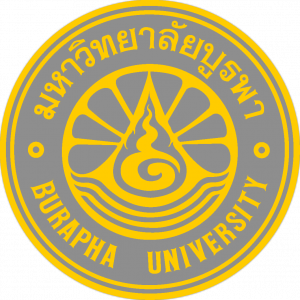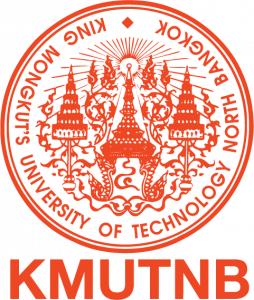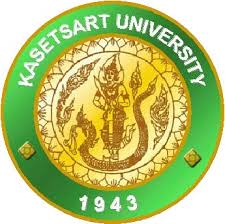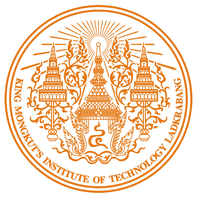Burapha University (BUU)
The planned project will be set up at Faculty of Informatics, Burapha University (BUU) by Digital Media and Interaction Technology Research Laboratory (DMI) and Knowledge and Smart Technology Research Laboratory (KST). BUU itself has approx. 39,000 full-time students, 1,327 full-time lecturers, and 2,019 scientific and administrative staff members. The university is connected worldwide by cooperating with 19 countries, which are 69 international universities and higher education institutions.
The Faculty of Informatics has approx. 1,700 full-time students, 26 full-time professors and lecturers, 15 invited professors and lecturers, and 17 full-time scientific and administrative employees. There are three major missions the Faculty of Informatics follows; 1) Study and Intensive Training for students with bachelor, master, and doctoral degrees in Computer Science, Information Technology, Software Engineering, and Informatics, 2) Research in informatics and computing-related fields, and 3) Academic Services for technology and knowledge transfer with industries and governmental units. Faculty of Informatics has cooperation agreements in terms of Memorandum of Understanding (MoU) with 7 universities and educational institutes world-wide and with 5 national companies and institutes.
The DMI is a research laboratory at the Faculty of Informatics focusing on interactive technology and education. The research and training are mainly conducted within a framework of using interactive technology in education, e.g. using virtual reality (VR) technology to enhance hands-on training, training to work with augmented reality (AR) technology, etc. With the development of Industry 4.0 in the Eastern Economic Corridor (EEC) (https://www.eeco.or.th/en) in Thailand, the DMI concentrates on agile training environment development for supporting Automation Training, which will become the one of the important part for Digital Transformation in Thailand. The KST is a research laboratory at the Faculty of Informatics, too. It concentrates on research and training in the fields of Data Analysis, Medical Image Processing, and Decision Support Modeling. The KST annually organizes an international conference called KST International Conference and provides a platform for international researchers for discussing about computer science, information technology, software engineering, and related fields for more than 11 years.
The Faculty of Informatics, Burapha University is a member of the Council of IT Deans of Thailand, which embraces 20 information technology and communication related faculties from different universities. Furthermore, the Faculty of Informatics works actively with international university and educational partners for reaching our common objectives and goals.
Rajamangala University of Technology Tawan-ok (RMUTTO)
The planned project will be set up at Faculty of Science and Technology, Rajamangala University of Technology Tawan-ok (RMUTTO) by Internet of Things Technology Research Laboratory (IoT), Robotic and Automation Technology Research Laboratory (RA), Bio Technology Research Laboratory (BTR), . RMUTTO itself has approx. 10,577 full-time students, 554 full-time lecturers, and 654 scientific and administrative staff members. The university is connected worldwide by cooperating with 19 countries, which are 69 international universities and higher education institutions.
The Faculty of Science and Technology has approx. 570 full-time students, 30 full-time professors and lecturers, and 26 full-time scientific and administrative employees. There are three major missions the Faculty of Science and Technology follows; 1) Study and Intensive Training for students with bachelor degrees in Information and Communication Technology, Mechatronic Engineering, Biotechnology, Food Industry and Service, Food Science and Technology, Computer Science, and Agicultural Engineering and master degree in Energy Technology, 2) Research in information, electronics and computing-related fields, mechanic and agriculture engineering, and food-related fields and 3) Academic Services for technology and knowledge transfer with industries and governmental units. Faculty of Science and Technology has cooperation agreements in terms of Memorandum of Understanding (MoU) with 5 universities and educational institutes world-wide and with 10 national companies and institutes.
Rajabhat Rajanagarindra University (RRU)
Rajabhat Rajanagarindra University (RRU) was originally located in the Muang district of Chachoengsao. RRU is closely situated near the 2nd Engineer Battalion Base (Srisothon Army Camp) and the well-known royal temple of Wat Sothon Wararam Woraviharn that is enshrined with Phra Phutasothon which is highly regarded as one of the most respected Buddha images by all Thai people across the nation. Currently, RRU has two recognized regional properties as followed: 1)The main property also known as the main campus is located on 422, Maruphong Road, Namuang subdistrict, Muang district, Chachoengsao province, 24000 and covers an area approximately 70 square kilometers (43 rai). 2) RRU’s second property is located on 6, Moo 4, Huasai sub-district, Bangkhla district, Chachoengsao, 24110. This campus is a large rural institute that is commonly known as the Bangkhla Campus and is approximately 30 kilometers from the township of Chachoengsao, it is located on. This campus was formerly used as by the public for many local activities and has total area of approximately 800 square kilometers (500 rai). On the 19th of July 1996 the Bangkhla Campus was previously granted by the Ministry of Interior and allowed the site to be built and used as RRU’s Bangkhla Campus.
RRU itself has approx. 8,000 full-time students, 400 full-time lecturers, and 400 scientific and administrative staff members. The university is connected worldwide by cooperating with 6 countries, which are 11 international universities and higher education institutions. The planned project will be set up at Faculty of Science and Technology, Rajabhat Rajanagarindra University (RRU) by Department of Information Technology.
The Faculty of Science and Technology has approx. 1,887 full-time students, 88 full-time professors and lecturers, and 20 full-time scientific and administrative employees. There are three major missions the Faculty of Informatics follows; 1) Study and Intensive Training for students with bachelor, master, and doctoral degrees in Agricultural Technology, Food and Service, Chemistry, Biology, Information Technology, Physics, Computer Science, Occupational Safety and Health, Environmental Science, Public Health, Science Education, Health Management, 2) Research in science and technology-related fields with focus on local community, and 3) Academic Services for technology and knowledge transfer with industries, governmental units and local community in the Eastern Economic Corridor (EEC) (https://www.eeco.or.th/en) in Thailand.
King Mongkut’s University of Technology North Bangkok (KMUTNB)
King Mongkut’s University of Technology North Bangkok (KMUTNB) – former known as Thai-German Technical College – is the outstanding technical university of Thailand with dominancy in engineering, technology, and technology-transfer didactic fields. KMUTNB has approx. 30,000 full-time students, 1,000 full-time professors and 1,500 technical and administrative staffs. The main goal of KMUTNB is to develop human resource with workability and creativity skills.
The recent campus of KMUTNB at Rayong is located in the Eastern Economic Corridor (EEC) – the 3-province area with modernization plan for industrial estates with high technology in the next 20 years, due to the National Development Roadmap. The campus consists of three faculties, which are Faculty of Engineering and Technology (EAT), Faculty of Science Energy and Environment (SciEE), and Faculty of Business Administration (FBA). Faculty of Engineering and Technology offers 5 bachelor programs, which are suitable for industrial estates in EEC, in fields of instrumentation and automation, industrial and logistic engineering, automotive engineering, and chemical and material engineering. Furthermore, the university organization with specialization in industrial training – The Research and Human Development Training Centre for Industry (RHTC) – is also located in Rayong. The RHTC was founded with the aim to improve and re-train workers and technicians in EEC industrial estate, so that they are prepared and hands-on for the new wave of technology coming through “Industry 4.0”. Moreover, the KMUTNB has the Thai-German Dual Education and E-learning Development Institute (TGDE), which is the institute with high experiences in industrial trainings and modern e-learning didactic and production.
KMUTNB as partner for this proposed project, has cooperation mainly with the area-based Faculty (EAT) in Rayong, the TGDE for e-learning didactic/materials, and the RHTC for evaluation of training programs. With this proposed project, KMUTNB aims to improve working skills for new graduates and to re-train/re-skill technicians and engineers in EEC towards the Industry 4.0.
Kasetsart University (KU)
Kasetsart University (KU)) is one of the leading universities in Thailand. KU consist of Central Kaset Bangkhen in Bangkok, Kamphaeng Saen Campus in Nakhon Pathom, Sriracha Campus in Chon Buri and Chalermphrakiat Sakon Nakhon Province Campus in Sakon Nakhon. Whereas located of the planned project will be set up at Faculty of Science at Sriracha campus in Chon buri.
KU has 68,326 of regular and special students; undergraduate, postgraduate and doctoral degree. There are 3,651 full-time lecturers; 42 Professors, 551 Associate Professors, 880 Assistant Professors and 2,178 Instructors that provides a total of 401 approved courses, 36 international programs and improved 167 curriculums and 167 majors.
KU has focused on the development of research or creative work, research promotion, innovation and invention. There are systems and mechanisms such as a comprehensive management support tool for science, the develop advanced labs, information systems and manage information resources to provide knowledge, network services, information technology, intellectual property management, and transfer technology to utilization for supporting the potential research for social and commercial.
Kasetsart University Sriracha campus occupies the area of 199 rai (32 hectares) at the distance of approximately 107 kilometers to the east of Bangkok. There are 11,080 students, 578 academic and administrative staffs with the vision “A leading university in research and learning in eastern Thailand, aiming to world university” which was dictated by the pressing of the country shortage of high quality manpower as a consequence of the Eastern Seaboard Development Project. The campus offers degree courses and short-term training programs in four faculties and one college; Management Sciences, Engineering, Science, Economics and International Maritime College. Moreover, the campus also provides master’s degree programs in Business Economics, Agribusiness, Industrial and Engineering.
King Mongkut’s Institute of Technology Ladkrabang (KMITL)
The planned project is to be accomplished in the Faculty of Science, Department of Computer Science, KMITL. The name of the institute was derived from the name of King Rama IV. The royal grand crown seal has been graciously used as the emblem of the institute. The name “Chao Khun Taharn” has been used in honor of Chao Phya Surawong Waiyawat (Won Boonnak) of whom the heiress, Liam Prot Pitaya Payat, donated her own land to establish the institute.
In 1977, the Faculty of Industrial Education and Science was established to offer fundamental courses for all faculties and to provide education and promoting research in science. In 1979, the Chao Khun Taharn Agricultural College, which was affiliated with the Department of Vocational Education, Ministry of Education, was transferred to KMITL, and became the Faculty of Agricultural Technology. The Computer Research and Service Center, and the School of Graduate Studies were founded in 1981 and 1986, respectively. In 1988, the Faculty of Industrial Education and Science was separated into two faculties: the Faculty of Industrial Education and the Faculty of Science. In 1991, the Central Library was founded. In 1995, KMITL opened its first remote campus with 1,800 hectares of land located in Chumphon Province in order to support the development of industry in the southern part of Thailand. Later in 1996, the Faculty of Information Technology was founded with the aim to provide higher education and research programs in information technology.
In 2000, the department of Agricultural Industry within the Faculty of Agricultural Technology was endorsed to become the Faculty of Agroindustry. Now, KMITL has 10 Faculties, 4 Colleges 2 Institutes, and 1 school in the main campus : Faculty of Engineering, Faculty of Architecture, Faculty of Science, Faculty of Industrial Education and Technology, Faculty of Agricultural Technology, Faculty of Information Technology, Faculty of Agroindustry, Faculty of Administration and Management, Faculty of Liberal Arts, Faculty of Medicine, International College, College of Nanotechnology, College of Advanced Manufacturing Innovation, International Academy of Aviation Industry, College of Educational Innovation Research, Institute of Music Science and Engineering, King Mongkut’s International Demonstration School. Chumphon Campus has 10 study courses in Bachelor degree and 5 study courses in Master degree.
Recently, KMITL has approximately 21,572 full-time Bachelor degree students, 3,998 Graduate degree students, and 1,033 academic staffs : 6 professors, 233 associate professors, 335 assistant professors, and 459 lecturers. The university is connected worldwide by cooperations with 133 international universities.
Eastern Economic Corridor – Human Resource Development Centre (EEC-HDC)
Eastern Economic Corridor – Human Resource Development Centre (EEC-HDC) is an affiliated entity under Thailand Eastern Economic Corridor Office (http://www.eeco.or.th). The primary missions of EEC-HDC includes the human resource planning and development within Thailand’s EEC areas based on demand-driven concept. The office is in deep collaboration with universities, vocational colleges, schools as well as Thailand 4.0 target industries (10 s-curves) to perform demand for labour projections covering all 10 target industries in EEC areas. It is also working with those educational institutions to develop programs in all levels in order to response to the demand of the industry.
In addition, EEC-HDC is helping the said institutions to develop training facilities and equipment through the government funding and private donations.






